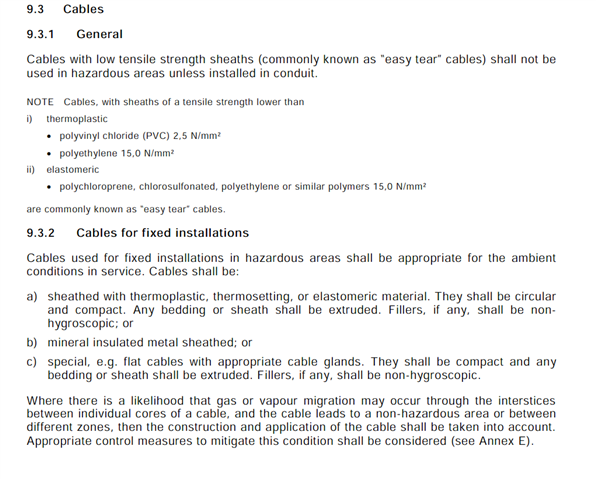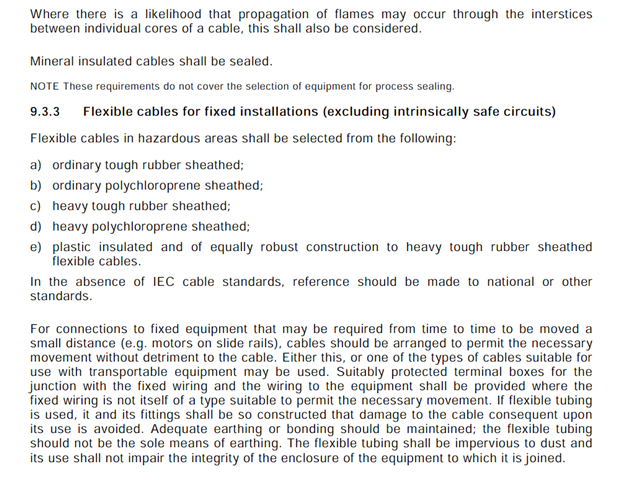Can someone offer a little help.I recently came across SY/CY cable used to wire some permanent fitted lights in a Hazardous area, they were also plugged in for some reason and switched on/off by twisting the EX plug. My question which I am struggling to find the answer to is SY or CY suitable for use in hazardous area?




